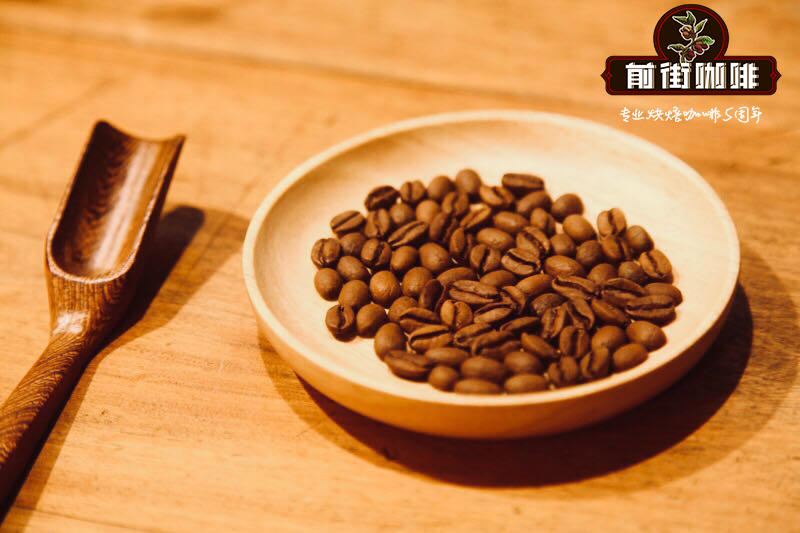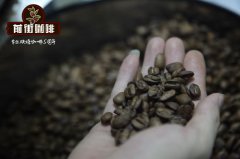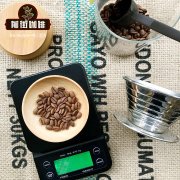Why is half-sun called volcanic treatment? How to bask coffee beans in half-sun treatment?

Professional coffee knowledge exchange more coffee bean information please follow the coffee workshop (Wechat official account cafe_style)
The so-called "treatment of raw coffee beans" refers to the process of turning coffee from fruit into raw beans.
After harvest, coffee beans need to go through complicated processing procedures before they can be refined into raw coffee beans. After the refined coffee beans, the perishable internal and external pericarp and pulp are removed, and then the seeds are removed; generally speaking, five kilograms of coffee beans can be refined into one kilogram of raw beans. Refined raw coffee beans are also known as "Green Bean".
At present, there are three common ways to refine coffee, namely, sun drying, water washing and half-sun drying combined with the above two methods.
First, the method of tanning:
After the coffee beans are harvested and dried by natural drying, the bright red coffee beans will become black Dry cherry as a result. After this process, the moisture content of coffee beans is reduced to 1112%. The way of tanning is very simple, as long as the harvested coffee beans are spread out in the open air and dried in the sun for a few days. In order to homogenize the dryness of coffee beans, and to avoid the fermentation of coffee beans, they need to be turned from time to time in the process of exposure, just like the method of "drying grain" adopted by farmers in Taiwan.
During the sun treatment, in addition to stirring the raw coffee beans, a layer of tarpaulin should be covered to block the night dew at night. Usually, if the coffee beans are mature enough, they can be further refined after a few days of sun exposure, and if the coffee beans are not mature enough, it may take a week or more to dry.
In addition to the natural sun drying, in recent years, large machines have been used to dehydrate coffee beans.
Coffee beans that have been sun-dried or mechanically dried will go through the procedure of removing the flesh, removing the hard skin that has turned black, and becoming raw coffee beans, which will be selected and graded before they will be transported to the market for sale.
The advantages of solarization are low cost, simple operation and no complex equipment, so almost all coffee producing countries used this procedure to deal with raw beans in the past. However, the biggest disadvantage of this treatment is that it is subject to weather conditions, and it takes a long time, and it is easy to mix too many defective beans or impurities.
Now, with the exception of a few countries, almost all other countries have switched to washing raw beans. Countries that maintain tanning treatment include Brazil, Ethiopia, Yemen, Bolivia and other countries. Among them, Haramoka in Ethiopia and Mocha in Yemen are famous sun-cured coffee beans.
Second, washing method:
Water washing, founded in the mid-18th century, is the main method for the treatment of raw coffee beans, which is popular in Central and South America.
Different from removing the pulp after the sun drying, the raw bean treatment of the water washing method removes the pulp at the beginning, then stores the pulp-removed coffee beans in a fermentation tank to remove residual pectin and mucous membrane, and finally dries the washed beans. The moisture content of the raw coffee beans treated by this method is about 12-13%.
At the beginning of the washing method, all the coffee beans are put into the bucket for screening, and in the following process, the unripe beans and defective beans are removed early, which is the greatest advantage of the water washing method. Therefore, the quality of raw beans processed by this method is very high, and the appearance of raw beans is better than that of sun-dried beans, so the transaction price goes up with the rising tide.
Unfortunately, the complicated procedures of washing also cause difficulties in operation and management. in the process of fermentation, coffee beans are easy to attach to the fermented taste, resulting in excessive sour taste and become inferior beans. In the case of negligent management of the fermentation tank, it may also cause changes in the microorganisms, resulting in the decline of the quality of raw beans.
In addition, the water washing treatment is extremely water-intensive, according to statistics, in order to take out a kilogram of raw coffee beans, 50 liters of water is needed for washing operation. This is an almost impossible task in some coffee-producing countries where water is scarce. Washing requires a lot of machinery to carry out various operations, and it is also a heavy burden for coffee farmers in some countries.
Third, half-sun / half-water washing:
Half-sun drying is to improve the old method of sunbathing. First, the coffee beans that have just been harvested are soaked in a large tank for screening. After removing the defective beans and impurities, the pulp and exocarp are removed by machine, but the endocarp part of the coffee is still preserved. Finally, the coffee beans covered with endocarp are sent to the sun drying ground for sun drying procedures.
During drying in the sun, coffee beans are still turned from time to time to ensure that raw coffee beans are evenly dehydrated and avoid excessive fermentation. Half-sun-treated coffee beans will be left with endocarp for a period of time before export to wait for the coffee flavor to be ripe, and the endocarp will be removed from the beans before export.
This method is mainly used in Brazil, and some Brazilian estates have begun to discard machine harvesting to pick coffee beans, switch to higher-cost manpower for coffee harvesting, and then carry out follow-up treatment in the way of half-sun, so that the quality of coffee has been significantly improved. The refined method of drying by tanning together with endocarp is generally called Pulped Natrual (half-sun).
There are also places where semi-washing will completely remove the inner and exocarp skin and pulp before sun-drying, which is mainly used in coffee-producing countries with humid climates, such as Indonesia. This method is mainly to prevent coffee beans with endocarp from producing bad taste due to heavy moisture in the drying process.
This treatment is called Semi-Washed (semi-washing).
The moisture content of raw coffee beans after sun treatment is lower, while that of water washing treatment is higher, which makes the appearance of raw coffee beans obviously different. Generally speaking, the color of raw coffee beans after washing is closer to that of turquoise, while that of sun-treated coffee beans is whiter. After washing, the skin of raw coffee beans is smooth and shiny, and most of the coffee beans treated by the sun still retain silver skins.
Although at present, most of the treatment methods of raw coffee beans tend to be washed, or refined by semi-washing according to the climatic conditions in the country, we can not assume that washed raw coffee beans are good coffee.
The reason for the high evaluation of washed coffee lies in its neat appearance, but having a good appearance does not mean it will have a good taste. For example, sun-treated Mocha coffee is of different sizes in appearance, but its unique wine aroma, rich acidity and chocolate-like finish are also irresistible.
Therefore, we can know that the treatment of raw coffee beans will not change the original flavor of coffee, and there is no absolute relationship between the quality of raw coffee beans and their handling methods.
Qianjie coffee: Guangzhou bakery, the store is small but a variety of beans, you can find a variety of unknown beans, but also provide online store services. Https://shop104210103.taobao.com
Important Notice :
前街咖啡 FrontStreet Coffee has moved to new addredd:
FrontStreet Coffee Address: 315,Donghua East Road,GuangZhou
Tel:020 38364473
- Prev

How to distinguish half-sun and honey-treated coffee beans from half-sun-treated coffee beans
Professional coffee knowledge exchange more coffee bean information Please pay attention to the coffee workshop (Wechat official account cafe_style) half-sun treatment is an improved treatment to improve the quality of sun-dried beans in traditional sun-drying areas. Screen the floating beans (the same sun washing method) II. Remove the pulp (same as washing method) three. After drying in the sun, the flesh will be removed, and the seeds with pectin will be moved into the outdoor sun for several days.
- Next

What does half-sun volcano treatment mean? How to distinguish between honey treatment and half-sun coffee beans?
Professional coffee knowledge exchange more information about coffee beans Please follow the coffee workshop (Wechat official account cafe_style) We often hear about the sun, honey treatment, washing and so on in coffee shops, which refers to the different ways of handling raw beans. When coffee still grows on the tree with peel and pulp, it is called coffee cherry. Coffee beans are only used in the middle of the seed and picked.
Related
- What is the meaning of lactic acid fermentation with coffee bean treatment?
- How to judge the state of foam by sound?
- How does the latte pull out the unicorn pattern? Come to get for a little trick to improve the flower pull!
- Will flower pulling affect the taste of the latte?
- Do you know the history of coffee?
- The difference between honey treatment and sun washing what is raisin honey treatment?
- What kind of milk can a novice use to make coffee foam to keep the foam longer? The correct method and skills of milking tutorial sharing
- Why do washed coffee beans taste sour? Flavor characteristics of washed Coffee
- Introduction to the skill of how to practice the size and height of water injection around the circle of hand-brewed coffee
- How do beginners practice coffee flower drawing from scratch?

